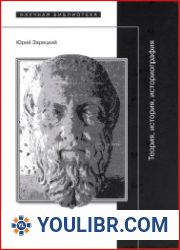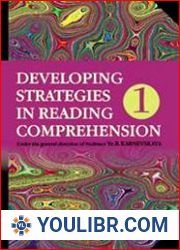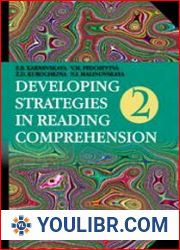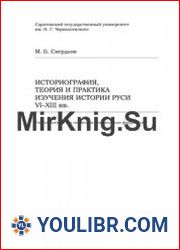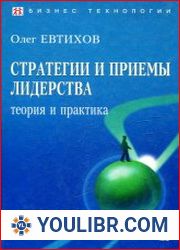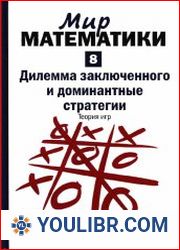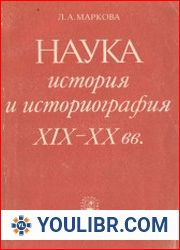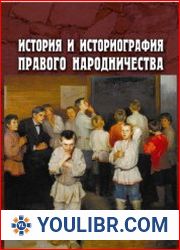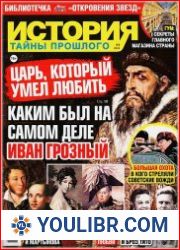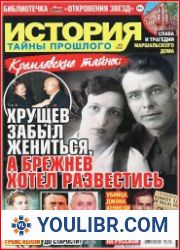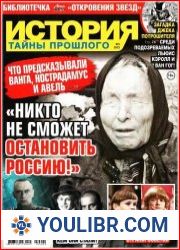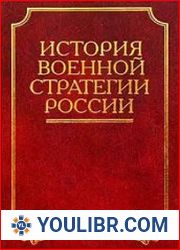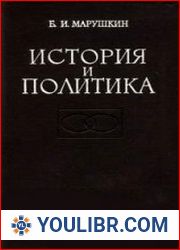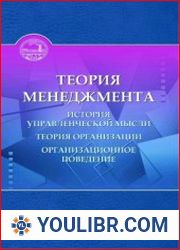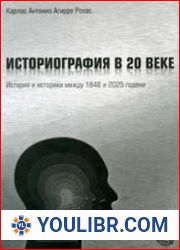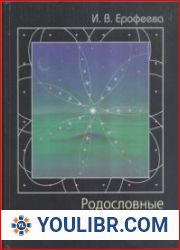
BOOKS - HISTORY - Стратегии понимания прошлого. Теория. История. Историография...

Стратегии понимания прошлого. Теория. История. Историография
In recent decades, significant changes have taken place in ideas about the nature of historical knowledge, one of the consequences of which was the problematization of the accessibility of the past for the historian. Today, it is increasingly apparent that the paintings he creates are largely due to his own position in relation to the subject of study and those research strategies that he voluntarily or involuntarily uses. Moreover, in both cases, these positions and strategies are determined by specific social, political and cultural contexts.
Livre "Stratégies pour comprendre le passé. Théorie de l'histoire. Historiographie" (Strategies for Understanding the Past. Théorie de l'histoire. Historiographie) explore l'évolution de la connaissance historique et son lien avec le présent, soulignant la nécessité d'élaborer un paradigme personnel pour comprendre le processus technologique du développement de la connaissance moderne comme base de la survie et de l'unité de l'homme dans un monde en guerre. Au cours des dernières décennies, il y a eu des changements importants dans notre compréhension de la nature du savoir historique, qui ont conduit à une réévaluation de la façon dont les historiens abordent leur métier. Il est devenu évident que les peintures créées par les historiens sont fortement influencées par leurs perspectives individuelles et les méthodes de recherche qu'ils utilisent, intentionnellement ou non. Ces perspectives et méthodes sont déterminées par des contextes sociaux, politiques et culturels spécifiques. L'auteur affirme que la connaissance historique n'est pas seulement le reflet d'une réalité objective, mais aussi la manifestation d'une vision subjective du monde qui l'entoure. 예약 "과거를 이해하기위한 전략. 역사 이론. 과거 이해를위한 전략. 역사 이론. 역사학) 은 역사적 지식의 진화와 현재와의 연관성을 탐구하며, 전쟁 세계에서 인간 생존과 연합의 기초로서 현대 지식 개발의 기술 과정을 이해하기위한 개인 패러다임을 개발할 필요성을 강조합니다. 최근 수십 년 동안 역사 지식의 본질에 대한 이해에 중대한 변화가있어 역사가들이 자신의 기술에 어떻게 접근하는지 재평가했습니다. 역사가들이 제작 한 그림은 의도적으로 또는 우연히 사용하는 개별 관점과 연구 방법에 크게 영향을받는 것이 분명해졌습니다. 이러한 관점과 방법은 특정 사회적, 정치적, 문화적 맥락에 의해 결정됩니다. 저자는 역사적 지식이 객관적인 현실을 반영한 것이 아니라 주변 세계에 대한 주관적인 아이디어의 표현이라고 주장한다. Buch "Strategien zum Verständnis der Vergangenheit. Theorie der Geschichte. Geschichtsschreibung" (Strategien zur Verständigung der Vergangenheit. Theorie der Geschichte. Historiographie) untersucht die Entwicklung des historischen Wissens und seine Beziehung zur Gegenwart und betont die Notwendigkeit, ein persönliches Paradigma für das Verständnis des technologischen Prozesses der Entwicklung des modernen Wissens als Grundlage für das Überleben und die Einheit des Menschen in einer kriegführenden Welt zu entwickeln. In den letzten Jahrzehnten hat sich unser Verständnis der Natur des historischen Wissens erheblich verändert, was zu einer Neubewertung der Herangehensweise der Historiker an ihr Handwerk geführt hat. Es hat sich gezeigt, dass die von Historikern geschaffenen Bilder stark von ihren individuellen Perspektiven und den von ihnen verwendeten Forschungsmethoden beeinflusst werden, absichtlich oder unabsichtlich. Diese Perspektiven und Methoden werden durch spezifische soziale, politische und kulturelle Kontexte bestimmt. Der Autor argumentiert, dass historisches Wissen nicht nur eine Spiegelung der objektiven Realität ist, sondern auch eine Manifestation subjektiver Vorstellungen von der umgebenden Welt. "Estrategias para comprender el pasado. Teoría de la historia. Historiografía" (Estrategias para Understanding the Past. Teoría de la historia. Historiografía) explora la evolución del conocimiento histórico y su relación con el presente, destacando la necesidad de desarrollar un paradigma personal para entender el proceso tecnológico del desarrollo del conocimiento moderno como base de la supervivencia y unidad del hombre en un mundo en guerra. En las últimas décadas se han producido cambios significativos en nuestra comprensión de la naturaleza del conocimiento histórico, lo que ha llevado a reevaluar la forma en que los historiadores abordan su oficio. Se hizo evidente que las pinturas creadas por los historiadores estaban fuertemente influenciadas por sus perspectivas individuales y los métodos de investigación que utilizaban, intencional o involuntariamente. Estas perspectivas y métodos están determinados por contextos sociales, políticos y culturales específicos. autor sostiene que el conocimiento histórico no es sólo un reflejo de la realidad objetiva, sino también una manifestación de las ideas subjetivas sobre el mundo que nos rodea. The book "Стратегии понимания прошлого. Теория истории. Историография" (Strategies for Understanding the Past. Theory of History. Historiography) explores the evolution of historical knowledge and its relationship with the present, highlighting the need to develop a personal paradigm for understanding the technological process of developing modern knowledge as the basis for human survival and unity in a warring world. In recent decades, significant changes have occurred in our understanding of the nature of historical knowledge, leading to a reevaluation of how historians approach their craft. It has become evident that the paintings created by historians are heavily influenced by their individual perspectives and the research methods they employ, whether intentionally or unintentionally. These perspectives and methods are shaped by specific social, political, and cultural contexts. The author posits that historical knowledge is not simply a reflection of objective reality, but also a manifestation of subjective perceptions of the world around us. Kitap "Geçmişi anlamak için stratejiler. Tarih teorisi. Geçmişi anlamak için stratejiler. Tarih teorisi. Tarihyazımı), tarihsel bilginin evrimini ve günümüzle olan bağlantısını araştırır, modern bilginin gelişiminin teknolojik sürecini, savaşan bir dünyada insanın hayatta kalması ve birliği için temel olarak anlamak için kişisel bir paradigma geliştirme ihtiyacını vurgular. Son yıllarda, tarihsel bilginin doğası hakkındaki anlayışımızda, tarihçilerin zanaatlarına nasıl yaklaştıklarının yeniden değerlendirilmesine yol açan önemli değişiklikler olmuştur. Tarihçiler tarafından üretilen resimlerin, bireysel bakış açılarından ve kasıtlı veya kasıtsız olarak kullandıkları araştırma yöntemlerinden güçlü bir şekilde etkilendiği ortaya çıkmıştır. Bu perspektifler ve yöntemler belirli sosyal, politik ve kültürel bağlamlar tarafından belirlenir. Yazar, tarihsel bilginin sadece nesnel gerçekliğin bir yansıması değil, aynı zamanda etrafındaki dünya hakkındaki öznel fikirlerin bir tezahürü olduğunu savunuyor. 本"過去を理解するための戦略。歴史の理論。過去を理解するための戦略。歴史の理論。歴史学(Historiography)は、歴史的知識の進化と現在とのつながりを探求し、現代の知識の発展の技術的過程を理解するための個人的なパラダイムを、戦争世界における人間の生存と統一の基礎として開発する必要性を強調している。ここ数十で、歴史的知識の性質の理解に大きな変化があり、歴史家が自分たちの工芸品にどのようにアプローチするかの再評価につながりました。歴史家が制作した絵画は、意図的にも意図的にも研究方法にも強い影響を受けていることが明らかになってきました。これらの視点と方法は、特定の社会的、政治的、文化的文脈によって決定される。歴史的知識は客観的現実を反映したものではなく、それを取り巻く世界についての主観的な思想の現れであると論じている。 《了解過去的策略》一書。歷史理論。史學"(解決過去的策略。歷史理論。史學)探討了歷史知識的演變及其與現在的關系,強調需要建立個人範式,以了解現代知識的發展過程作為人類在交戰世界中生存和團結的基礎。近幾十來,我們對歷史知識的本質的理解發生了重大變化,導致人們重新評估了歷史學家如何對待他們的手藝。很明顯,歷史學家創作的畫作受到他們個人觀點和研究方法的強烈影響,他們故意或無意地使用了這些畫作。這些觀點和方法取決於特定的社會,政治和文化背景。作者認為,歷史知識不僅是對客觀現實的反映,而且是對周圍世界主觀觀念的體現。
Book "אסטרטגיות להבנת העבר. תיאוריה של ההיסטוריה. אסטרטגיות להבנת העבר. תיאוריה של ההיסטוריה. ההיסטוריוגרפיה) בוחנת את התפתחות הידע ההיסטורי ואת הקשר שלו עם ההווה, ומדגישה את הצורך לפתח פרדיגמה אישית להבנת התהליך הטכנולוגי של התפתחות הידע המודרני כבסיס להישרדות ולאחדות האנושית בעולם לוחם. בעשורים האחרונים חלו שינויים משמעותיים בהבנתנו את טבעו של הידע ההיסטורי, מה שהוביל להערכה מחודשת של האופן שבו היסטוריונים מתקרבים לאומנותם. התברר שהציורים שיוצרו על ידי היסטוריונים מושפעים מאוד מהפרספקטיבות האישיות שלהם ומשיטות המחקר בהן הם משתמשים, במכוון או שלא בכוונה. נקודות מבט ושיטות אלה נקבעות על ידי הקשרים חברתיים, פוליטיים ותרבותיים ספציפיים. המחבר טוען שהידע ההיסטורי אינו רק השתקפות של המציאות האובייקטיבית, אלא גם ביטוי של רעיונות סובייקטיביים על העולם הסובב אותה. Livro "Estratégias de compreensão do passado. Teoria da História. Historiografia" (Estrategies for Understanding the Fast. Teoria da História. A historiografia) explora a evolução do conhecimento histórico e sua conexão com o presente, enfatizando a necessidade de criar um paradigma pessoal para compreender o processo tecnológico de desenvolvimento do conhecimento moderno como base para a sobrevivência e unidade do homem no mundo em guerra. Nas últimas décadas, houve uma mudança significativa na nossa compreensão da natureza do conhecimento histórico, que levou a uma reavaliação da forma como os historiadores abordam o seu ofício. Tornou-se evidente que as pinturas criadas pelos historiadores são fortemente influenciadas pelas suas perspectivas individuais e técnicas de pesquisa que usam, intencionalmente ou involuntariamente. Estas perspectivas e métodos são definidos por contextos sociais, políticos e culturais específicos. O autor afirma que o conhecimento histórico não é apenas um reflexo da realidade objetiva, mas também uma demonstração de percepções subjetivas sobre o mundo ao redor. Книга "Стратегии понимания прошлого. Теория истории. Историография" (Strategies for Understanding the Past. Теория истории. Историография) исследует эволюцию исторического знания и его связь с настоящим, подчеркивая необходимость выработки личностной парадигмы понимания технологического процесса развития современного знания как основы выживания и единства человека в воюющем мире. В последние десятилетия в нашем понимании природы исторического знания произошли значительные изменения, приведшие к переоценке того, как историки подходят к своему ремеслу. Стало очевидно, что картины, созданные историками, находятся под сильным влиянием их индивидуальных перспектив и методов исследования, которые они используют, преднамеренно или непреднамеренно. Эти перспективы и методы определяются конкретными социальными, политическими и культурными контекстами. Автор утверждает, что историческое знание является не просто отражением объективной реальности, но и проявлением субъективных представлений об окружающем мире. كتاب "استراتيجيات لفهم الماضي. نظرية التاريخ. استراتيجيات لفهم الماضي. نظرية التاريخ. Historiography) يستكشف تطور المعرفة التاريخية وارتباطها بالحاضر، مع التأكيد على الحاجة إلى تطوير نموذج شخصي لفهم العملية التكنولوجية لتطوير المعرفة الحديثة كأساس لبقاء الإنسان ووحدته في عالم متحارب. في العقود الأخيرة، كانت هناك تغييرات كبيرة في فهمنا لطبيعة المعرفة التاريخية، مما أدى إلى إعادة تقييم كيفية تعامل المؤرخين مع حرفتهم. أصبح من الواضح أن اللوحات التي ينتجها المؤرخون تتأثر بشدة بوجهات نظرهم الفردية وطرق البحث التي يستخدمونها، إما عن قصد أو عن غير قصد. وهذه المنظورات والأساليب تحددها سياقات اجتماعية وسياسية وثقافية محددة. يجادل المؤلف بأن المعرفة التاريخية ليست مجرد انعكاس للواقع الموضوعي، ولكنها أيضًا مظهر من مظاهر الأفكار الذاتية حول العالم من حوله. Strategie di comprensione del passato. La teoria della storia. Storiografia" (Strategies for Understanding the Fast. La teoria della storia. Storiografia) esplora l'evoluzione della conoscenza storica e il suo legame con il presente, sottolineando la necessità di sviluppare un paradigma personale per comprendere il processo tecnologico di sviluppo della conoscenza moderna come base per la sopravvivenza e l'unità dell'uomo nel mondo in guerra. Negli ultimi decenni, nella nostra comprensione della natura della conoscenza storica, ci sono stati cambiamenti significativi che hanno portato a rivalutare il modo in cui gli storici si adattano al loro mestiere. È diventato evidente che i quadri creati dagli storici sono fortemente influenzati dalle loro prospettive individuali e dai metodi di ricerca che usano, intenzionalmente o involontariamente. Queste prospettive e metodi sono determinati da specifici contesti sociali, politici e culturali. L'autore sostiene che la conoscenza storica non è solo un riflesso della realtà oggettiva, ma anche una dimostrazione di concezioni soggettive del mondo circostante. Książka "Strategie zrozumienia przeszłości. Teoria historii. Strategie zrozumienia przeszłości. Teoria historii. Historiografia) bada ewolucję wiedzy historycznej i jej związek z teraźniejszością, podkreślając potrzebę opracowania osobistego paradygmatu dla zrozumienia technologicznego procesu rozwoju nowoczesnej wiedzy jako podstawy ludzkiego przetrwania i jedności w wojującym świecie. W ostatnich dziesięcioleciach nastąpiły znaczące zmiany w naszym zrozumieniu natury wiedzy historycznej, prowadzące do ponownej oceny sposobu, w jaki historycy podchodzą do ich rzemiosła. Okazało się, że obrazy tworzone przez historyków są pod silnym wpływem ich indywidualnych perspektyw i metod badawczych, których używają, celowo lub nieumyślnie. O tych perspektywach i metodach decydują specyficzne konteksty społeczne, polityczne i kulturowe. Autor twierdzi, że wiedza historyczna jest nie tylko odzwierciedleniem obiektywnej rzeczywistości, ale także przejawem subiektywnych idei o otaczającym ją świecie. pdf 파일 다운로드 Scarica il file pdf Strategie di comprensione del passato. Una teoria. La storia. Storiografia descarregar ficheiro pdf Estratégias de compreensão do passado. Teoria. História. Historiografia скачать файл PDF Стратегии понимания прошлого. Теория. История. Историография להוריד קובץ PDF אסטרטגיות להבנת העבר. תיאוריה. היסטוריה. היסטוריוגרפיה PDF-Datei herunterladen Strategien zum Verständnis der Vergangenheit. Theorie. Die Geschichte. Historiografie pdf dosyasını indir Geçmişi anlamak için stratejiler. Teori. Tarih. Tarihyazımı 下载 pdf 文件 了解過去的戰略。理論。歷史。史學
descargar archivo pdf Estrategias para comprender el pasado. Teoría. La historia. Historiografía PDFファイルをダウンロード تنزيل ملف pdf استراتيجيات لفهم الماضي. نظرية. التاريخ. التأريخ pobierz plik pdf télécharger le fichier pdf Stratégies pour comprendre le passé. La théorie. L'histoire. Histographie download pdf file download pdf file Стратегии понимания прошлого. Теория. История. Историография
Les concepts de la nature du savoir historique ont connu des changements importants au cours des dernières décennies, dont l'une des conséquences a été la problématique de l'accessibilité du passé pour l'historien. Aujourd'hui, il est de plus en plus évident que les peintures qu'il crée sont en grande partie dues à sa propre position sur le sujet d'étude et aux stratégies de recherche qu'il utilise librement ou involontairement. Dans les deux cas, ces positions et stratégies sont conditionnées par des contextes sociaux, politiques et culturels spécifiques.
Le nozioni sulla natura della conoscenza storica hanno subito negli ultimi decenni un cambiamento significativo, con l'effetto di rendere il passato accessibile allo storico. Oggi è sempre più evidente che i suoi quadri sono in gran parte dovuti alla sua posizione rispetto alla materia di studio e alle strategie di ricerca che usa liberamente o involontariamente. In entrambi i casi, queste posizioni e queste strategie sono dovute a contesti sociali, politici e culturali specifici.
En las percepciones sobre la naturaleza del conocimiento histórico se han producido cambios sustanciales en las últimas décadas, una de cuyas consecuencias ha sido la problemática de la accesibilidad del pasado para el historiador. Hoy en día es cada vez más evidente que las pinturas que crea se deben en gran medida a su propia posición hacia el tema de estudio y a aquellas estrategias de investigación que utiliza de forma libre o involuntaria. Y, en ambos casos, estas posiciones y estrategias se encuentran condicionadas por contextos sociales, políticos y culturales específicos.
In den Vorstellungen von der Natur des historischen Wissens hat es in den letzten Jahrzehnten wesentliche Veränderungen gegeben, deren Folge die Problematisierung der Zugänglichkeit der Vergangenheit für den Historiker war. Heute wird immer deutlicher, dass die von ihm geschaffenen Bilder zu einem großen Teil auf seine eigene Haltung zum Studienfach und auf jene Forschungsstrategien zurückzuführen sind, die er freiwillig oder unfreiwillig anwendet. In beiden Fällen werden diese Positionen und Strategien durch spezifische soziale, politische und kulturelle Kontexte bestimmt.
Houve uma mudança significativa nas noções sobre a natureza do conhecimento histórico nas últimas décadas, tendo como consequência a questão da disponibilidade do passado para o historiador. Hoje em dia, é cada vez mais evidente que os quadros que ele está criando se devem em grande medida à sua própria posição em relação à matéria de estudo e às estratégias de pesquisa que ele usa livre ou involuntariamente. Em ambos os casos, essas posições e estratégias são condicionadas a contextos sociais, políticos e culturais específicos.
В представлениях о природе исторического знания в последние десятилетия произошли существенные перемены, одним из следствий которых стала проблематизация доступности прошлого для историка. Сегодня все больше становится очевидным, что создаваемые им картины в значительной степени обусловлены его собственной позицией по отношению к предмету изучения и теми исследовательскими стратегиями, которые он вольно или невольно использует. Причем в обоих случаях эти позиции и стратегии оказываются обусловленными конкретными социальными, политическими и культурными контекстами.
In recent decades, significant changes have taken place in ideas about the nature of historical knowledge, one of the consequences of which was the problematization of the accessibility of the past for the historian. Today, it is increasingly apparent that the paintings he creates are largely due to his own position in relation to the subject of study and those research strategies that he voluntarily or involuntarily uses. Moreover, in both cases, these positions and strategies are determined by specific social, political and cultural contexts.
Les concepts de la nature du savoir historique ont connu des changements importants au cours des dernières décennies, dont l'une des conséquences a été la problématique de l'accessibilité du passé pour l'historien. Aujourd'hui, il est de plus en plus évident que les peintures qu'il crée sont en grande partie dues à sa propre position sur le sujet d'étude et aux stratégies de recherche qu'il utilise librement ou involontairement. Dans les deux cas, ces positions et stratégies sont conditionnées par des contextes sociaux, politiques et culturels spécifiques.
Le nozioni sulla natura della conoscenza storica hanno subito negli ultimi decenni un cambiamento significativo, con l'effetto di rendere il passato accessibile allo storico. Oggi è sempre più evidente che i suoi quadri sono in gran parte dovuti alla sua posizione rispetto alla materia di studio e alle strategie di ricerca che usa liberamente o involontariamente. In entrambi i casi, queste posizioni e queste strategie sono dovute a contesti sociali, politici e culturali specifici.
En las percepciones sobre la naturaleza del conocimiento histórico se han producido cambios sustanciales en las últimas décadas, una de cuyas consecuencias ha sido la problemática de la accesibilidad del pasado para el historiador. Hoy en día es cada vez más evidente que las pinturas que crea se deben en gran medida a su propia posición hacia el tema de estudio y a aquellas estrategias de investigación que utiliza de forma libre o involuntaria. Y, en ambos casos, estas posiciones y estrategias se encuentran condicionadas por contextos sociales, políticos y culturales específicos.
In den Vorstellungen von der Natur des historischen Wissens hat es in den letzten Jahrzehnten wesentliche Veränderungen gegeben, deren Folge die Problematisierung der Zugänglichkeit der Vergangenheit für den Historiker war. Heute wird immer deutlicher, dass die von ihm geschaffenen Bilder zu einem großen Teil auf seine eigene Haltung zum Studienfach und auf jene Forschungsstrategien zurückzuführen sind, die er freiwillig oder unfreiwillig anwendet. In beiden Fällen werden diese Positionen und Strategien durch spezifische soziale, politische und kulturelle Kontexte bestimmt.
Houve uma mudança significativa nas noções sobre a natureza do conhecimento histórico nas últimas décadas, tendo como consequência a questão da disponibilidade do passado para o historiador. Hoje em dia, é cada vez mais evidente que os quadros que ele está criando se devem em grande medida à sua própria posição em relação à matéria de estudo e às estratégias de pesquisa que ele usa livre ou involuntariamente. Em ambos os casos, essas posições e estratégias são condicionadas a contextos sociais, políticos e culturais específicos.
В представлениях о природе исторического знания в последние десятилетия произошли существенные перемены, одним из следствий которых стала проблематизация доступности прошлого для историка. Сегодня все больше становится очевидным, что создаваемые им картины в значительной степени обусловлены его собственной позицией по отношению к предмету изучения и теми исследовательскими стратегиями, которые он вольно или невольно использует. Причем в обоих случаях эти позиции и стратегии оказываются обусловленными конкретными социальными, политическими и культурными контекстами.
In recent decades, significant changes have taken place in ideas about the nature of historical knowledge, one of the consequences of which was the problematization of the accessibility of the past for the historian. Today, it is increasingly apparent that the paintings he creates are largely due to his own position in relation to the subject of study and those research strategies that he voluntarily or involuntarily uses. Moreover, in both cases, these positions and strategies are determined by specific social, political and cultural contexts.







